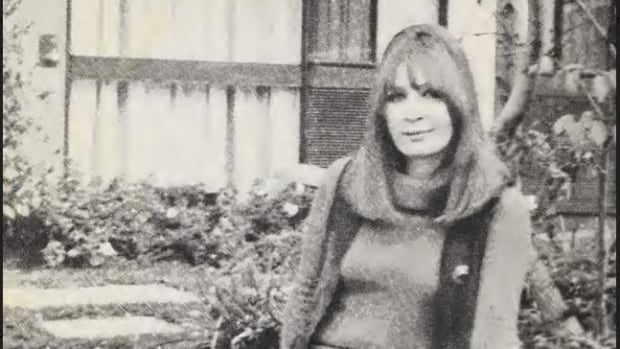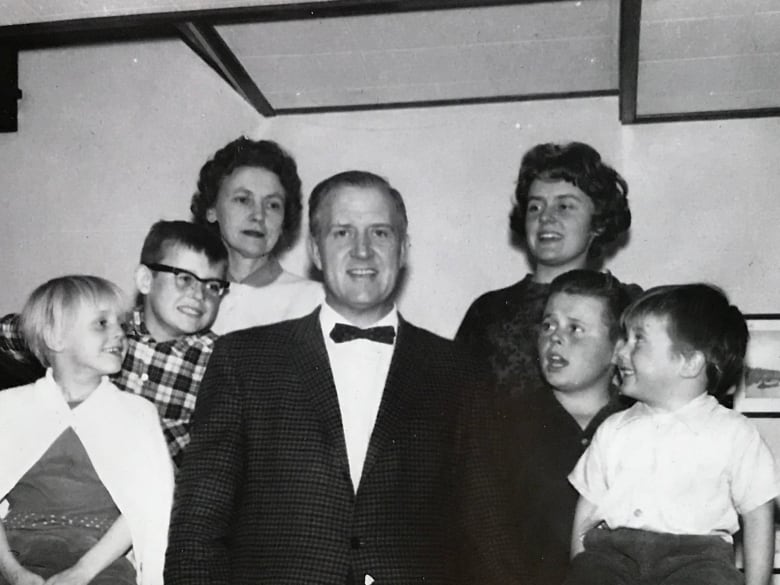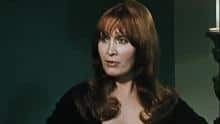
Dianna Boileau was one of the first Canadians to receive gender-affirming surgery over a half-century ago and wrote about her journey to living her true life in her memoir Behold, I Am Woman.
Now, Boileau and Dr. Harold Challis, who was based in Fort Frances and counselled Boileau and her family on the path to her transition, are being honoured with a new plaque near La Verendrye Hospital in the northwestern Ontario town on Friday.
Boileau, who died in 2014, was born in Winnipeg, and at various times lived in Fort Frances and other parts of northern Ontario, as well as Toronto and Alberta. Challis, who emigrated to Canada from Britain in 1950, died in 1971 in a hunting accident at age 53, according to his obituary.
An event to unveil the plaque Friday, on the International Trans Day of Visibility, was set to be livestreamed starting at 1 p.m. CT.
The plaque is part of an Ontario Heritage Trust program that commemorates significant people, places and events throughout the province. Following the unveiling at the Fort Frances Museum and Cultural Centre, the plaque is being installed in front of La Verendrye Hospital.
The Ontario Heritage Trust’s website says Challis, who worked at La Verendrye Hospital, had learned of Boileau’s struggles at school. He’s is credited with counselling Boileau, who became his patient, and the family in the 1950s. “His support encouraged Boileau to begin living openly as a woman,” the website article says.
Boileau says in her book that she was born a boy and her adoptive parents named her Clifford. She received gender-affirming surgeries in 1969 and April 1970, in Canada and the U.S., at a time when few such procedures were done around the world.
Paving the path
Douglas Judson is with Borderland Pride, which Ontario Heritage Trust has credited with getting the plaque initiative going.
Judson said Boileau’s story is one of trans rights and recognition, and how health care in Ontario has developed. He said although he’s from Fort Frances, he only learned about Boileau from a Toronto Star story he read in law school.
“A large portion of it was about Dianna’s youth and encountering Dr. Challis in Fort Frances. And this would have been back in the 1950s. So if Fort Frances is a rural northern community now, it was a very honky-tonk paper mill and logging community back then,” said Judson.
“And so just a really remarkable story about someone who rose to media prominence as a result of their journey, but also who was able to, I think, self-actualize and develop their identity in a way that would have been even more difficult than it might be today.”
Borderland Pride later created a podcast called Behold Dianna that was based on Behold, I am a Woman.
WATCH | Dianna Boileau tells her story:
CBC host Margo Lane interviews the first woman in Canada to have made a surgical transition from male to female in 1972. Aired June 29, 1972 on the CBC program All About Women.
Samson Busch, a transgender man who has lived in Fort Frances and now is in Thunder Bay, learned about Boileau when he was approached to help with the podcast series. Busch also helped with the plaque unveiling at La Verendrye Hospital.
“They wanted to have input from the community, the LGBTQ community in Fort Frances, to talk about [Boileau’s] story because she grew up in that region, and they’re interested in hearing the perspectives and the modern experiences from that community.”
Busch said it was “very cool” to learn about Boileau, because it sheds light on Fort Frances and it’s important to know that a trans person can be from a small region and the transgender community has a long history.
Boileau “existed in a time where she likely didn’t have an LGBT community and she also probably didn’t know a lot of other trans people,” said Busch.
“I think it’s a really good example for people today, not only that LGBT and trans people existed in the past — we’re talking about the ’60s and ’70s — but also serves as representation for people today that they’re not alone in that [and transgender people] always existed.”
Challis’s kids recall his important work
Challis was a British physician, based in Fort Frances, who had five children, including Deborah Challis, the eldest, and Stephen Challis, the youngest.
His family said he was highly respected in the community, very involved with education, had many friends and was highly regarded by his colleagues.
Deborah recalls that when she was younger, her friends would enjoy their house and often tell her they hoped her dad would be there because it was “so much fun” talking with him.
“It was because he could relate to people of all ages, and he never shied away from whatever topic he wanted to put out for discussion.”

Both Stephen and Deborah didn’t learn about their father’s involvement with Boileau’s transition until her book was released. Their dad had already passed away.
“So actually she kind of opened up the topic and the connection. ‘Oh, he was her doctor. We didn’t know that.’ So then we started looking into things,” Stephen said..
“And of course, once we learned about it, we kept saying to ourselves, ‘Why didn’t dad tell us?'” said Deborah Challis.
Stephen said that in the late 1940s, when gender-reassigning surgery began at the University of London in the U.K., his father was finishing his studies as a general surgeon.
Based on some of their father’s documents, they believe he made a connection with a doctor who happened to be exploring this type of surgery in the medical world.
“When he ended up in little old Fort Frances, he happened to have recently studied with the leading experts on that topic. In other words, pure luck,” said Stephen.
Deborah said she suspects Dianna’s parents took comfort in the knowledge their father had deep knowledge about the surgery.
“He could talk about the fact that this was going on and this is what surgeons in England were doing — [that] must have been a little bit reassuring to them.”
Capturing this moment in history
Erin Semande, manager of public education and community development at Ontario Heritage Trust, said they received the request for commemorating Boileau and Challis from Borderland Pride.
“We were all really excited to see a story like this cross our desk. It was definitely the first request we received to commemorate a part of transgender history in Ontario,” said Semande.
“For the time that Dianna and her family went to Dr. Harold Challis, it was, you know, not common for a doctor to have an understanding of what it meant to be transgender during that time. So his coaching and his allyship were really an asset.”
The plaque process took a year, requiring a historian or other expert to conduct background research in a rigorous process.
“Previously, stories like Dianna’s have not been included in the historical narrative, right?” Semande said. “We didn’t learn about people like Dianna in school. We didn’t learn about people like Dianna even in university. So I think we do have a social responsibility to tell these stories.”
Deborah said she’s happy her father is being given recognition for his involvement. Stephen also takes pride in his dad’s work, emphasizing it was Boileau who endured the big struggles.
“But it’s very good fortune, as it were, that she met my father. They seemed to be a good match. So the fact that he can contribute to, and frankly that I can better understand way better now what happened in that time, it’s a good thing.”
